This year I’ve been getting back into birding for the first time in a few years. (I already have more ebird checklists this year, and it’s only mid-February, than for the previous five full years combined.) Getting out into the field this often has rekindled my interest in bird photography, which has (unfortunately) rekindled my interest in camera gear. Blurry photos and missed shots have been a constant companion on my birding adventures, and this year I’ve been more motivated than before to solve those problems.
Enter a new (to me, not new new) Nikon D850 off eBay. (Why a camera that was introduced in 2017 and not one of the mirrorless cameras, like the Sony a9ii my Florida Master Naturalist comrade Paul Strauss, from Osprey Nature Photography, uses and recommended to me? Simple: I have two car payments, and I’m already invested in Nikon glass. The 5-figure investment in their flagship camera and glass is simply out of my reach.) The new camera has much higher resolution than my old D7100, but to me that’s less important than two other big upgrades: a much better autofocus system and a faster frame rate. The higher resolution is great, don’t get me wrong, but the focusing and the frame rate translate directly into the benefit I’m after: fewer missed shots. (You can get the same benefit with any modern digital camera, and I’m sure I’ll switch to mirrorless in the next couple of years, but for now, and until I win the lottery, I’m sticking with the system I’ve already invested in.)
So, with my new camera and my renewed interest in birds, I’ve been doing a lot of birding, and a lot of hanging around outside. I discovered that in my neighborhood there’s a fairly regular flight of vultures over the house in the late afternoon; big, dark, silent birds drifting lazily by on the way to their evening roost a couple of miles south of my house.
Every now and then, a relatively rare raptor joins the throng: a dark-morph Short-tailed Hawk. It’s usually soaring even higher than the vultures, nearly out of reach of my camera even with my longest lens, so the photo below is the best I’ve managed so far:
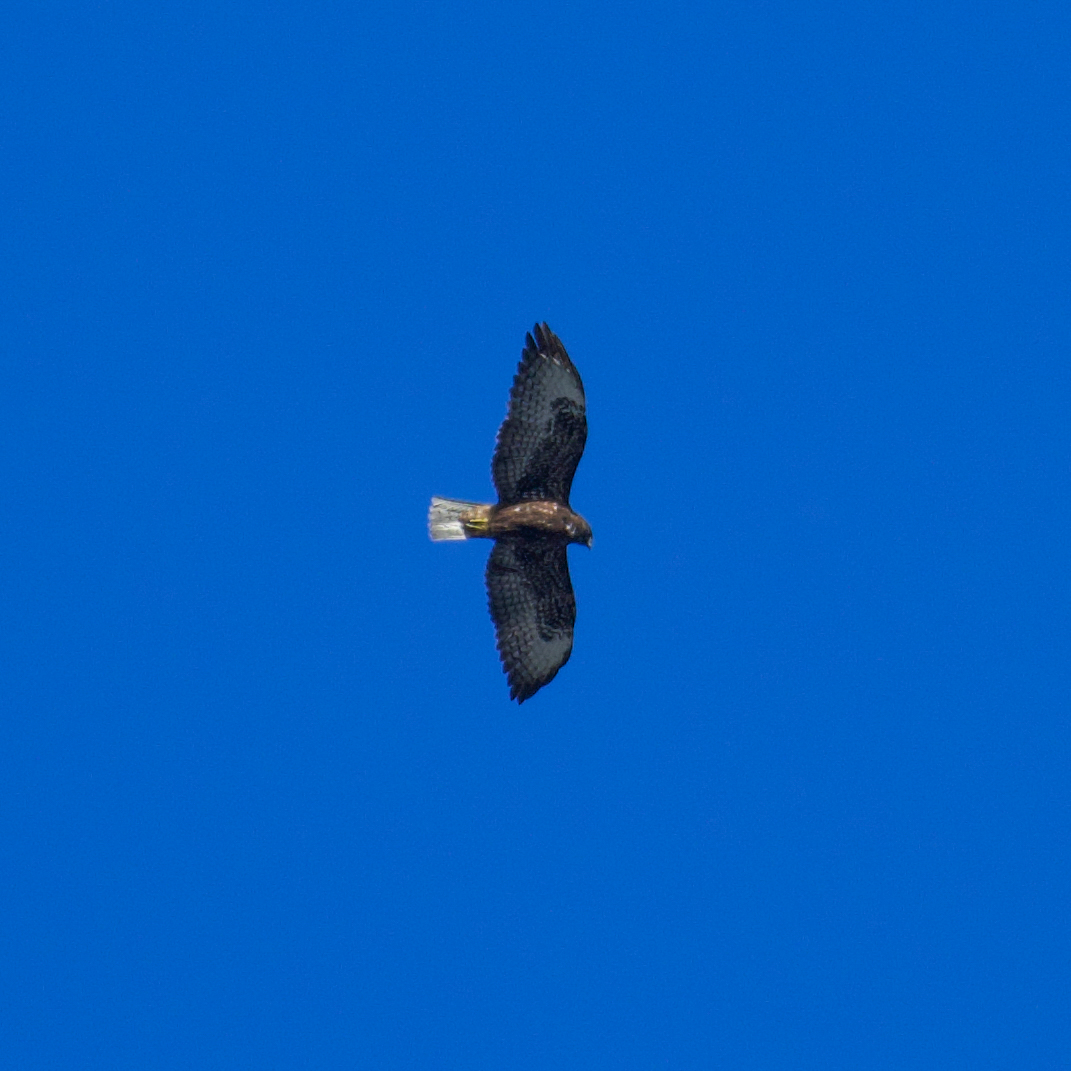
One afternoon (before I got my new camera), the bird actually drifted down close enough for me to get a good shot, if only I’d had the focus tracking and frame rate to capture more than one almost-good image:
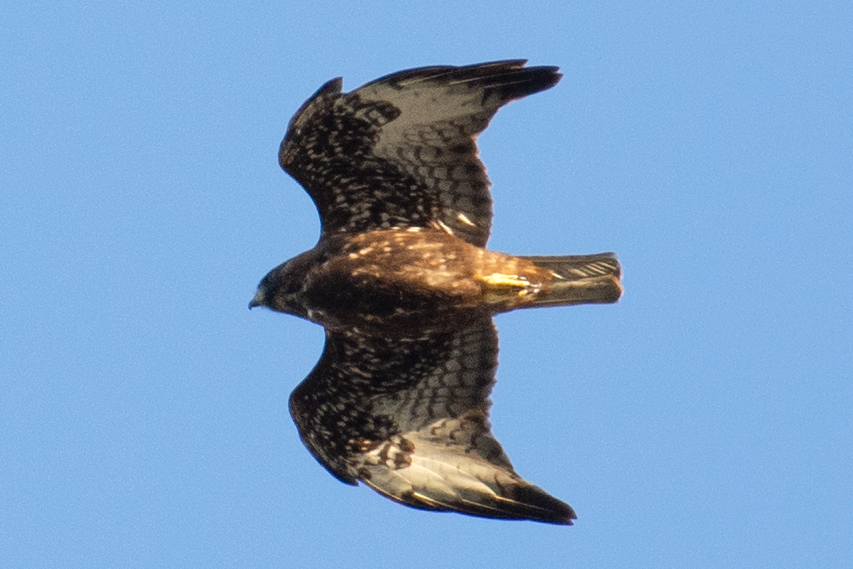
In order to get any photos of these big birds, I have to keep my eyes on the sky, though. They fly high, without a sound, and they don’t come by every day; the short-tail joins them even less often.
But there’s another afternoon flight through my neighborhood, a lower, more regular, and much more raucous one: a small flock of Nanday Parakeets. They rocket overhead every day (at least, every day this year, as far as I can determine) at treetop level screeching their heads off the whole way, scaring the Mockingbirds down from their treetop perches and completely ignoring the neighborhood Kestrel that hunts around the same time. The flock is on its way to a roost somewhere nearby in the neighborhood but that I’ve never managed to locate.
Despite the loud noise that heralds their arrival, for the past six weeks I’ve only ever had time to hear them screeching before they’ve come and gone, and I’ve certainly never managed to get a photograph of them. Until today, I was never able to even get my camera to my eye before the flight was out of range. But today, I was ready. I was already outside with my camera hoping to see the vultures and the short-tail, nowhere to be seen, when I heard the screeching of the Nanday flock. I got my camera as ready as I could, but even then I wasn’t fast enough to train the lens on them and get them in focus in flight until they were relatively far away but, wonder of wonders, they landed on the phone lines in the backyard of the house right across the street from mine! I’m on good terms with Bob and Arlene, so I was able to sneak into their side yard and get some shots from not too many miles away.
In fact, now that I think about it, it just might be that their neighborhood roost is right there in the trees in their backyard. Once the birds have gone silent, you really have to know where to look before you can spot them. You’d never believe how easy it is for these relatively big bright green birds to disappear into the foliage completely until you (don’t) see it happen before your eyes.
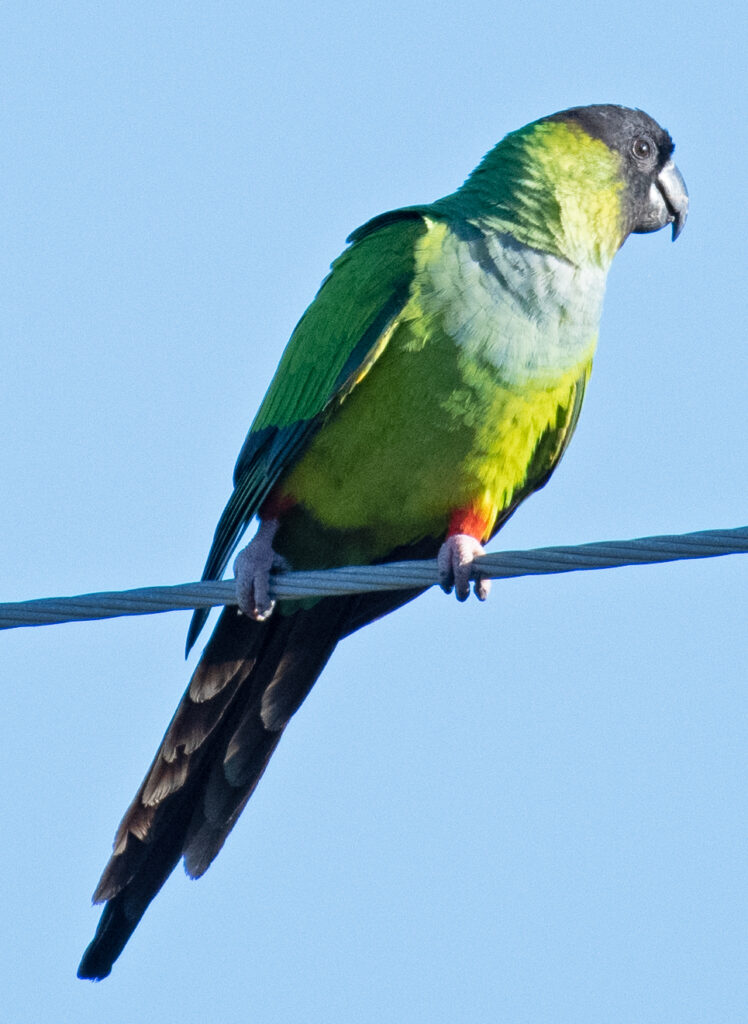
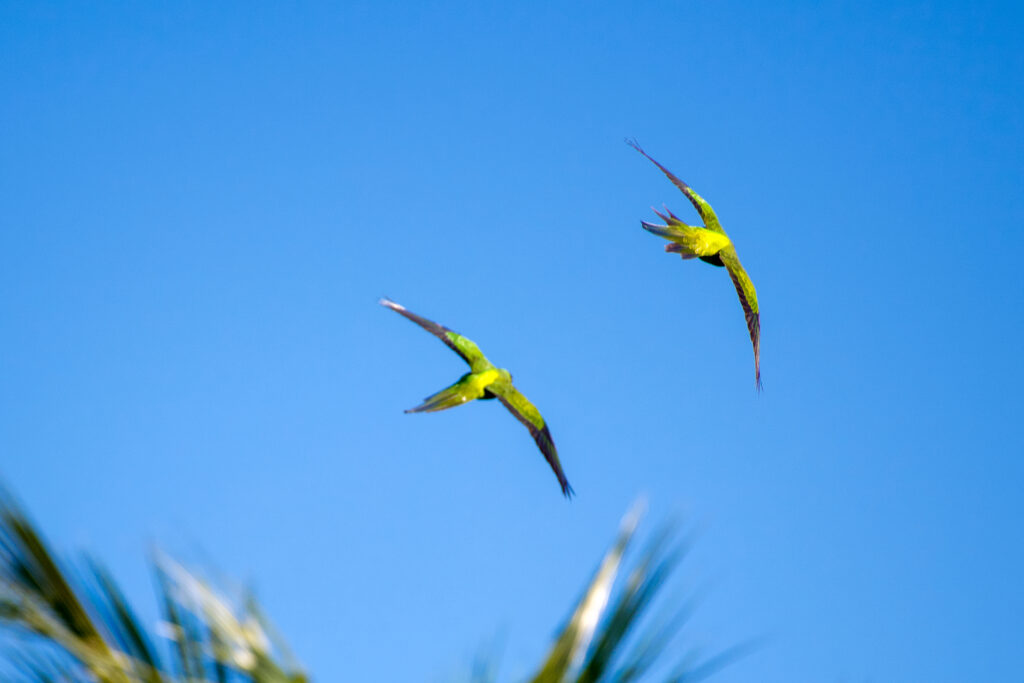
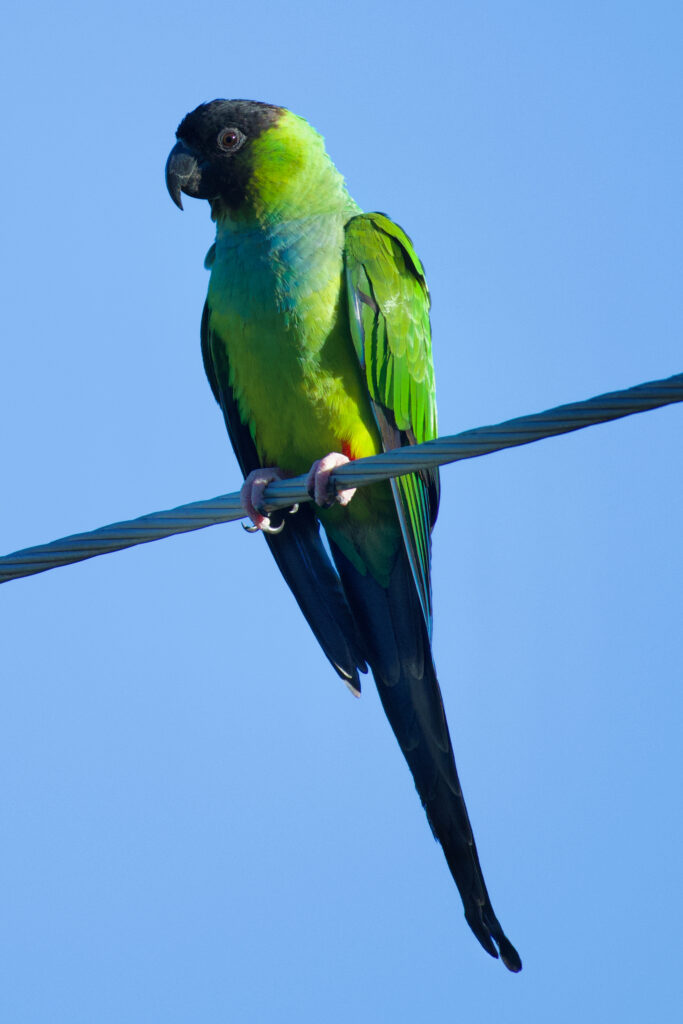
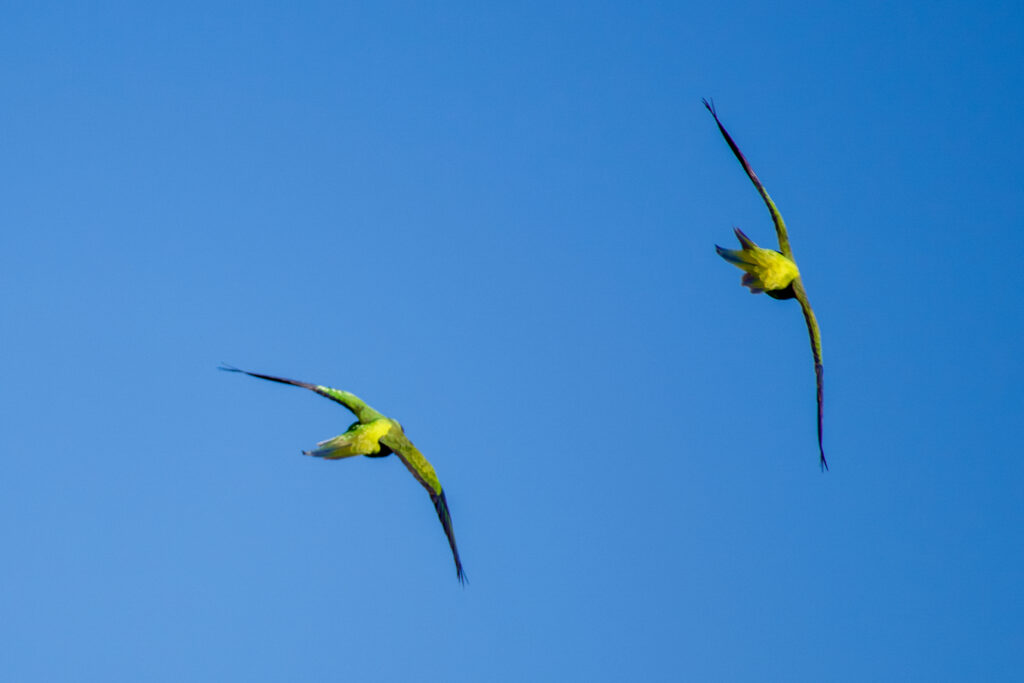
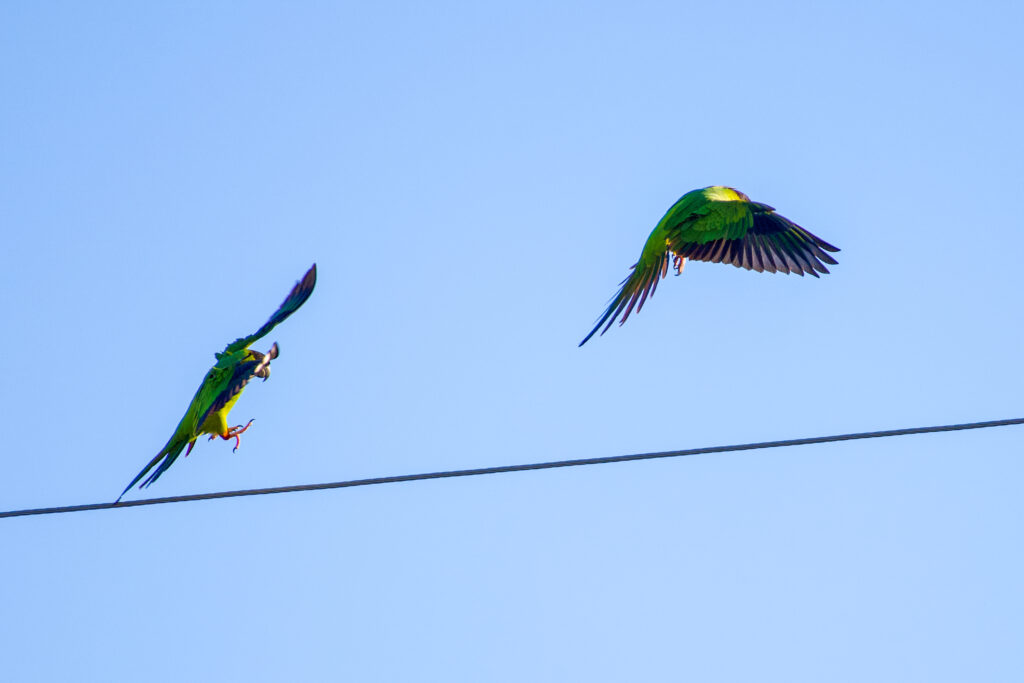
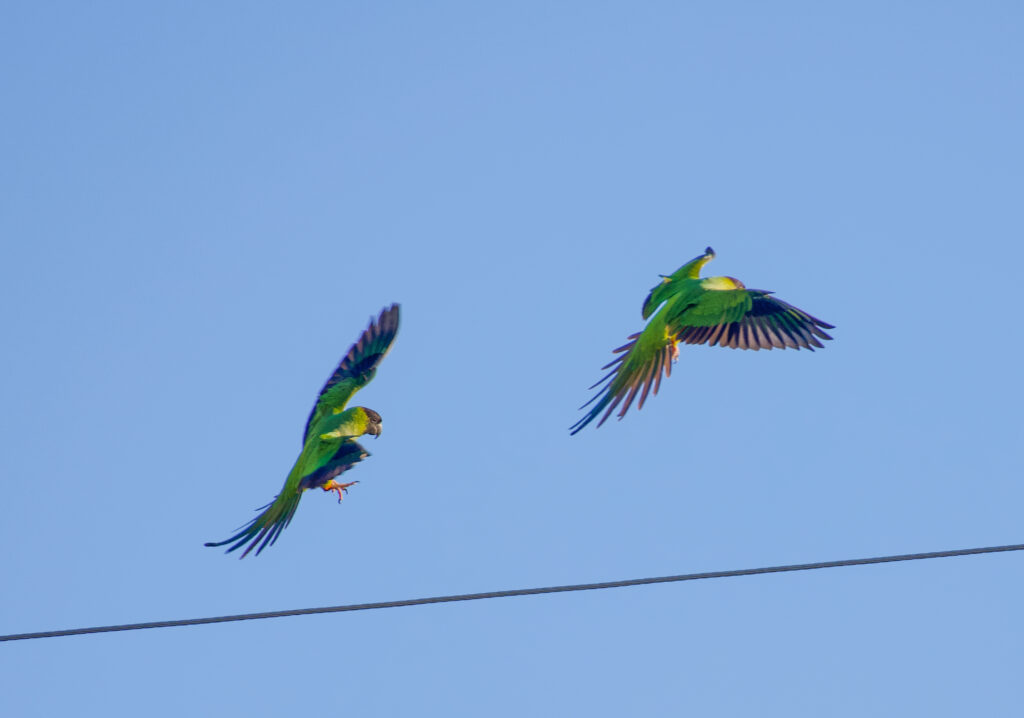
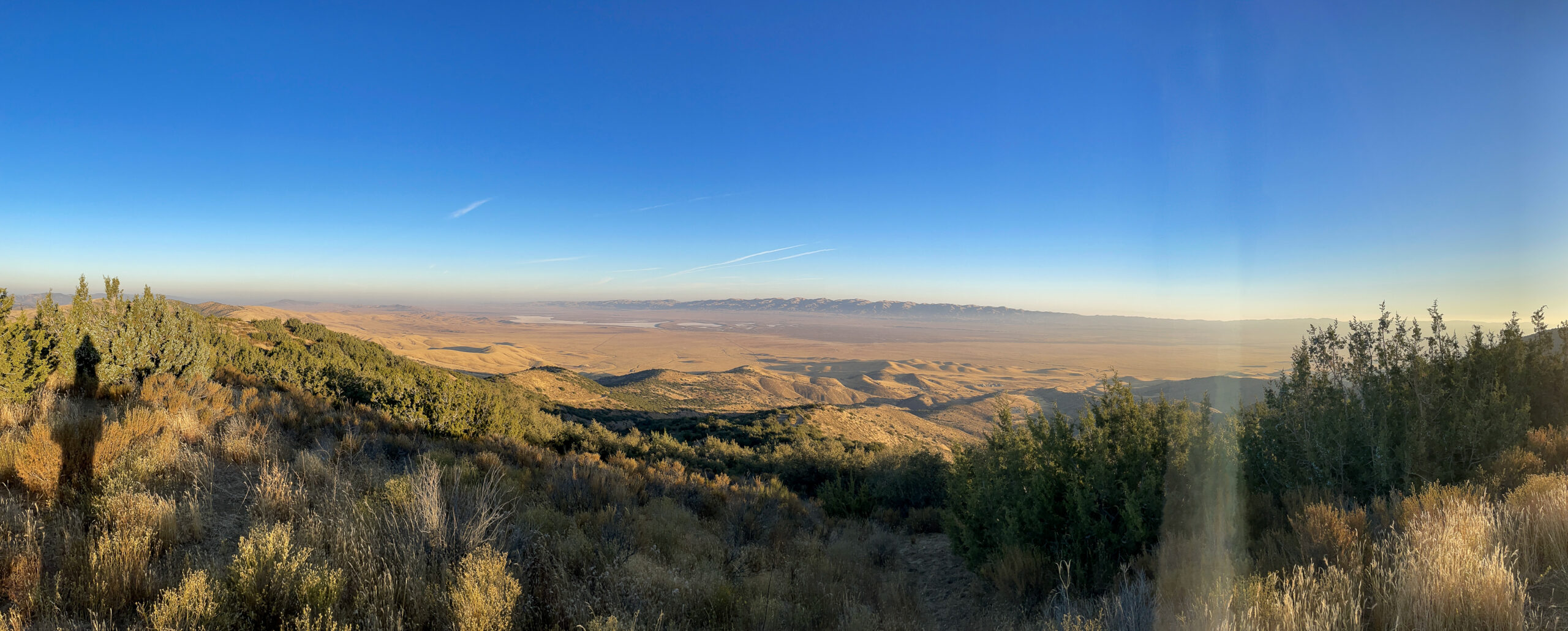
When you mentioned looking up; that’s when I thought with some sadness about how much I miss birding. After cervical surgery, it is a no can do. I watch live webinars, here in Israel that the Society for the Protection of Nature, has during spring & fall migration. Israel is a major flyway. But when you truly love something or someone; they they stay with you forever. Like birding.
Oh, Marta. I feel for you. I’m glad you’ve found a way to scratch that nature itch, at least a little bit!